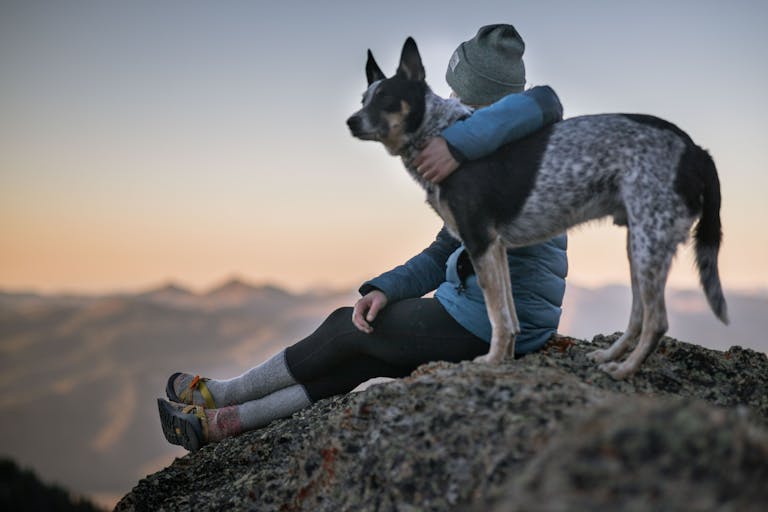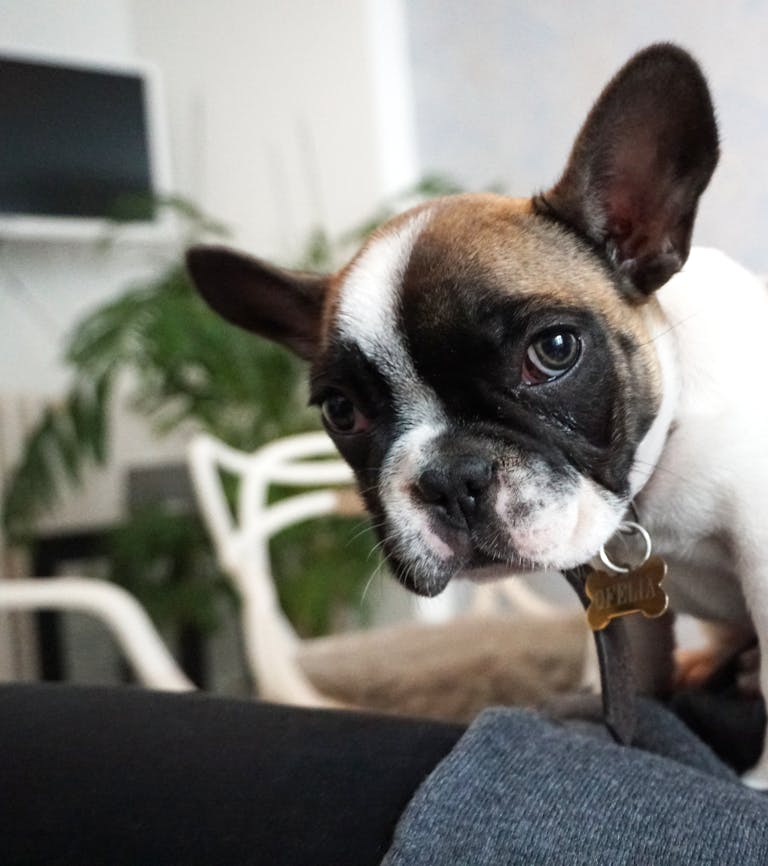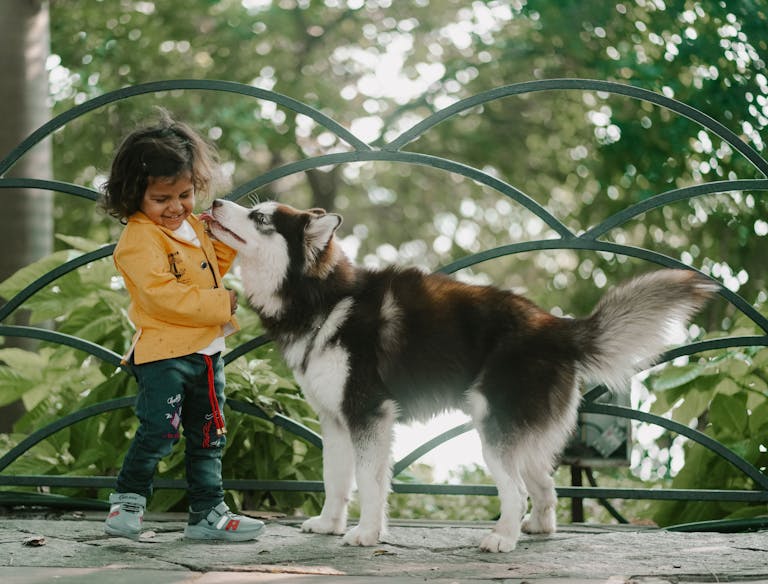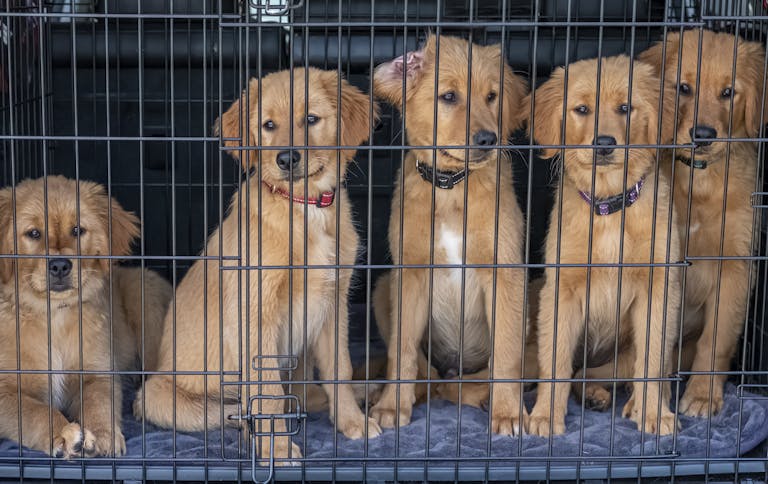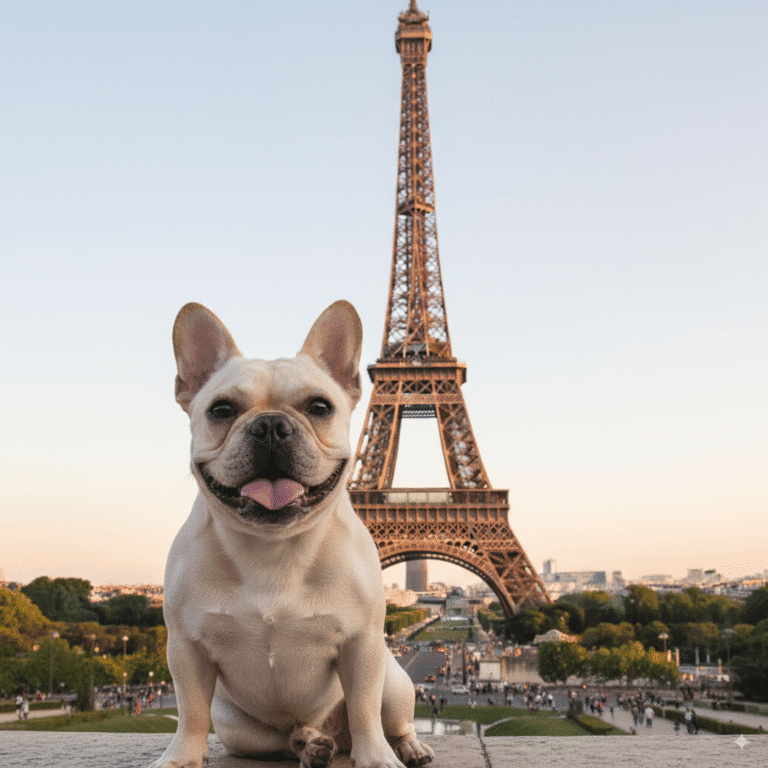Why Does My Dog Run Into Me Full Speed – Zoomies, Behavior & Training Explained
If you’re a dog owner, you may have experienced the delightful, yet sometimes puzzling, behavior of your furry friend running into you at full speed. So, why does my dog run into me full speed? Let me break it down for you.
When dogs run into their owners at full speed ahead, it’s often a display of excitement and a desire for interaction. It’s their way of saying, “Hey, I’m so happy to see you!” Dogs are social animals known for their exuberant nature and this behavior is no exception. Running into you is their way of expressing their joy and love.
Understanding dog behavior is key to deciphering why they engage in certain actions. Dogs communicate through body language, and running into you is just one of their many forms of communication. By running into you, your dog may be seeking physical contact and showing affection. It’s their way of connecting with you and strengthening the bond between dog and human.
It’s important to note that running into you at full speed is a natural behavior and not a cause for concern. However, it is crucial to ensure a safe environment to prevent any accidents or injuries. Redirecting this behavior outside, while on a leash, or to a carpeted area can help minimize the risk.
Table of Contents
Key Takeaways – Why Does My Dog Run Into Me Full Speed
- Dogs may run into their owners at full speed out of excitement and to initiate play.
- Running into you is a form of communication and affection from your dog.
- Ensure a safe environment to prevent injuries during these exuberant moments.
- Redirect the behavior to a suitable area, such as outside or a carpeted space.
- Running into you is a natural behavior and part of the special bond between dogs and their owners.
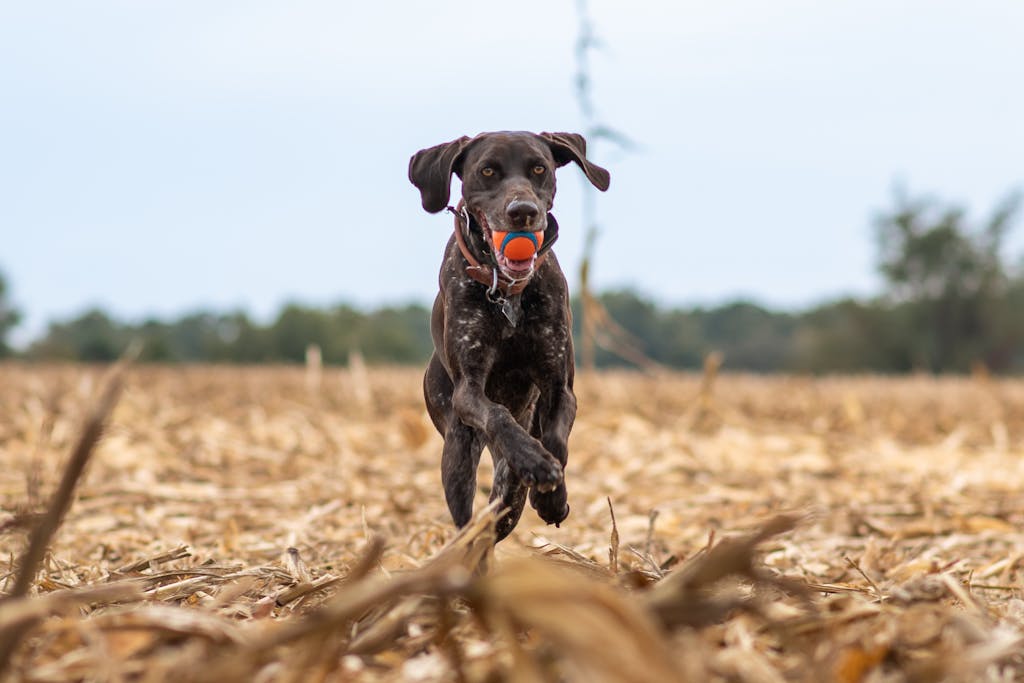
Why Dogs Run Into You at Full Speed – Quick Guide
| Reason | What It Means | What You Can Do |
|---|---|---|
| Excitement & Play | Dog is overjoyed and wants to interact | Redirect with toys, dog training commands |
| Communication & Attention | Dog may be trying to tell you something | Give your dog structured playtime |
| Zoomies (FRAPs) | Sudden bursts of energy, runs full speed | Take the dog for a walk, allow safe space |
| Poor Eyesight | Dog could misjudge distance or vision issue | See a vet, clear obstacles |
| Breed Tendencies | Some dog breeds are more likely to follow their owners | Adjust exercise based on breed |
| Anxiety or Clinginess | Dog suddenly following due to stress (e.g., thunderstorms and fireworks) | Comfort calmly, never punish your dog |
What are dog zoomies?
Dog zoomies, also known as Frenetic Random Activity Periods (FRAPs), are sudden bursts of energy where dogs run around in circles, chase their tails, and do laps around the house or garden. This behavior usually occurs when dogs have excess energy that needs to be released. It is most common in puppies and can be seen less frequently as dogs get older. Zoomies typically do not last very long and are followed by a period of rest.
Dogs are known for their energetic and playful nature, and zoomies are a perfect example of their exuberance. These bursts of energy can happen seemingly out of nowhere and often catch owners off guard. One moment your dog may be calm and relaxed, and the next they’re tearing through the house at full speed, tail wagging and tongue flying.
During zoomies, many dogs may exhibit a range of behaviors, such as running in circles around furniture, making quick turns, and engaging in playful antics. Some dogs may even jump on furniture or run laps around the yard. These energetic outbursts can be entertaining to watch and are generally harmless, as long as the environment is safe.
Zoomies are often a sign that dogs need to release pent-up energy. It’s common for dogs to have bursts of energy after periods of rest, such as waking up in the morning or after a nap. Additionally, zoomies can be triggered by exciting events, such as playing fetch, chasing a ball, or the anticipation of playtime.
While zoomies are most commonly associated with puppies, adult dogs can also experience these frenetic bursts of energy. However, as older dogs may mature, they tend to have fewer zoomies and may exhibit a more controlled and focused play style.
Causes of Dog Zoomies
Dog zoomies, also known as Frenetic Random Activity Periods (FRAPs), occur when dogs have a build-up of excess energy that is then released in one short burst. These bursts of energy can be triggered by various factors, including:
- The need to blow off steam before bed
- An adrenaline rush after a bath
- Being food-oriented after eating
- A build-up of nervous energy during a training session
These triggers can vary from dog breed to breed and may be influenced by their daily routine. Understanding the underlying causes of dog zoomies can help dog owners better manage and channel their pet’s energy in a positive way.
Safety concerns with dog zoomies
While the behavior of dog zoomies itself is not harmful, there are potential dangers associated with it. Dogs running at high speeds can skid on slippery floors or collide with furniture, leading to injuries. It’s essential to prioritize safety when your dog is in zoomie mode to prevent accidents and ensure a positive dog-human interaction.
To mitigate the risks and keep your dog safe during zoomies, follow these tips:
- Provide a safe environment: Before your dog starts zooming, ensure the area is clear of any obstacles. Remove loose rugs or slippery surfaces.
- Redirect to a suitable space: If your dog tends to zoom indoors, redirect them to a fenced yard or a carpeted room.
- Supervise outdoor zoomies: When your dog zooms outside, keep an eye on them. Taking your dog to a secure area helps.
- Regular exercise: A tired dog is less likely to zoom indoors. Consider dog training games to engage their mind.
- Training and recall: Teaching recall and control commands can prevent accidents. A dog trainer or expert who specializes in canine behavior can also help.
By prioritizing safety and using dog training, you can help your dog enjoy zoomies without injuries.
Why dogs run into their owners
Dogs running into their owners at full speed can be puzzling. However, there are several reasons why dogs exhibit this behavior.
Excitement and play
Dogs may run right into their owners out of excitement. This is often seen in puppies and dog breeds that love to play.
Communication and attention-seeking
Running into their owners can also be a form of communication. A dog may do it to get your attention, trying to tell you they want affection or interaction.
Poor eyesight and spatial awareness
In some cases, dogs may run into their owners unintentionally due to poor eyesight or distraction. If your dog has suddenly started bumping into you, see a vet to rule out vision issues.
Other Reasons Dogs Run into Their Owners
Besides excitement and communication, some dogs exhibit ADHD-like behavior, making them hyperactive. Others may simply get bored or seek personal space. Dogs that like rough play may ran full into their owners by accident.
Providing proper exercise and mental stimulation is key. Give your dog puzzle toys, start training with recall, or take the dog for a walk daily. Dog breeds that are more energetic may need extra activity.
If your dog suddenly following you everywhere or colliding with you becomes frequent, it could signal anxiety. Some dogs may cling away from their owners during thunderstorms and fireworks, while others stick closer.
Why dogs bump into their owners
Dogs may bump into their owners for communication or attention. Some breeds are more likely to use nudging and bumping as signals.
Signs of dominance include standing tall and direct eye contact. Signs of submission include crouching or licking. Remember: never punish your dog for bumping — instead redirect with training.
If bumping becomes too much, a dog trainer or veterinary behaviorist would like to help.
Why dogs walk into their owners
Sometimes dogs unintentionally walk into you due to distraction or poor spatial awareness. Other times, they may follow closely because dogs are social animals and want comfort.
An old dog with fading vision may walk into you for reassurance. Make sure your dog has clear walking paths indoors, and see a vet if this happens often.
Why dogs run and jump on their owners
Running and jumping is especially common in puppies. Some dogs like to greet with full enthusiasm, while others dog always leap for attention.
Training tips
- Teach your dog basic commands like “sit.”
- Use positive reinforcement and reward calm greetings.
- Get your dog plenty of exercise to reduce energy.
- Keep your dog on a leash during greetings until they learn.
Remember, consistency is key when you train a dog that’s excitable.
FAQs – Why Does My Dog Run Into Me Full Speed
Why does my dog follow me everywhere?
Dogs are pack animals by nature and often feel a strong attachment to their owners. When your dog follows you everywhere, it is likely seeking companionship and reassurance. This behavior is a reflection of their loyalty and love, and it can also stem from their instinct to stay close to their “pack” for safety and security.
What does it mean when my dog suddenly runs into me?
If your dog suddenly runs into you, it could be an expression of excitement or a desire for attention. Dogs often communicate through their body language, and this behavior may indicate that they want to play, need something, or are simply feeling affectionate. Paying attention to their cues can help you understand their needs better.
Why does my dog follow you around all the time?
When your dog follows you around, it’s often a sign that they want to be involved in everything you do. This behavior can be attributed to their affectionate nature and desire to bond with you. Additionally, dogs experience a strong sense of smell and may follow you to learn more about their environment or because they anticipate a treat or playtime.
Are there certain dog breeds that are more likely to follow their owners?
Yes, some dog breeds are more likely to follow their owners due to their temperament and historical roles. Breeds such as Labrador Retrievers, Golden Retrievers, and herding dogs like Border Collies are known for their loyalty and attachment to humans. These breeds often enjoy being by their owner’s side and may run full speed to catch up with them.
What should I do if my dog is trying to tell me something by running into me?
If your dog is running into you, they may be trying to communicate a need, such as wanting to go outside, play, or receive attention. It’s essential to observe their behavior closely; if they seem anxious or persistent, they might be trying to tell you something important. Responding to their cues can strengthen your bond and improve your dog’s overall happiness.
How can I teach my dog to get out of the way instead of running into me?
Training your dog to move out of the way can be accomplished through consistent commands and positive reinforcement. Use commands like “move” or “out” while rewarding them with treats when they comply. This will help your dog learn to give you space, but remember that patience and consistency are key during dog training.
Why do dogs run full speed towards me when they see another dog?
When your dog sees another dog and runs full speed towards you, it may be a sign of excitement or a desire to engage with that dog. They might be seeking your approval or looking for reassurance before approaching the other dog. It’s essential to monitor their interactions and guide them appropriately, especially if they’re not well-socialized.
What does it mean when my old dog runs into me unexpectedly?
As dogs age, their senses may decline, making them more prone to unexpected behaviors like running into you. This could be due to decreased vision or hearing, leading them to rely more on their sense of smell and proximity to you. If this behavior is new or concerning, it might be worth consulting a vet to ensure there are no underlying health issues.
Why does my dog love running into me while I’m playing with a ball?
Your dog loves running into you while playing with a ball because they see you as an integral part of the game. This behavior can stem from their excitement and eagerness to engage with you during play. They may also be trying to capture your attention or bring the ball back to you, reinforcing the playful bond between you two.
Conclusion
Running into owners at full speed is often linked to zoomies, excitement, or lack of awareness. Whether your dog follows you everywhere, runs in circles, or dog is getting overexcited, the behavior is usually harmless.
Still, see a vet if your dog’s vision seems impaired. And always provide exercise, mental stimulation, and safe play spaces.
Taking your dog for walks, playing fetch, or using interactive toys keeps them happy. If your dog is scared or anxious, comfort them gently.
Remember: dogs are social animals, and they love interaction. By giving your dog outlets for energy, training, and care, you’ll build a stronger bond — and fewer bumps to the back of my knees!


